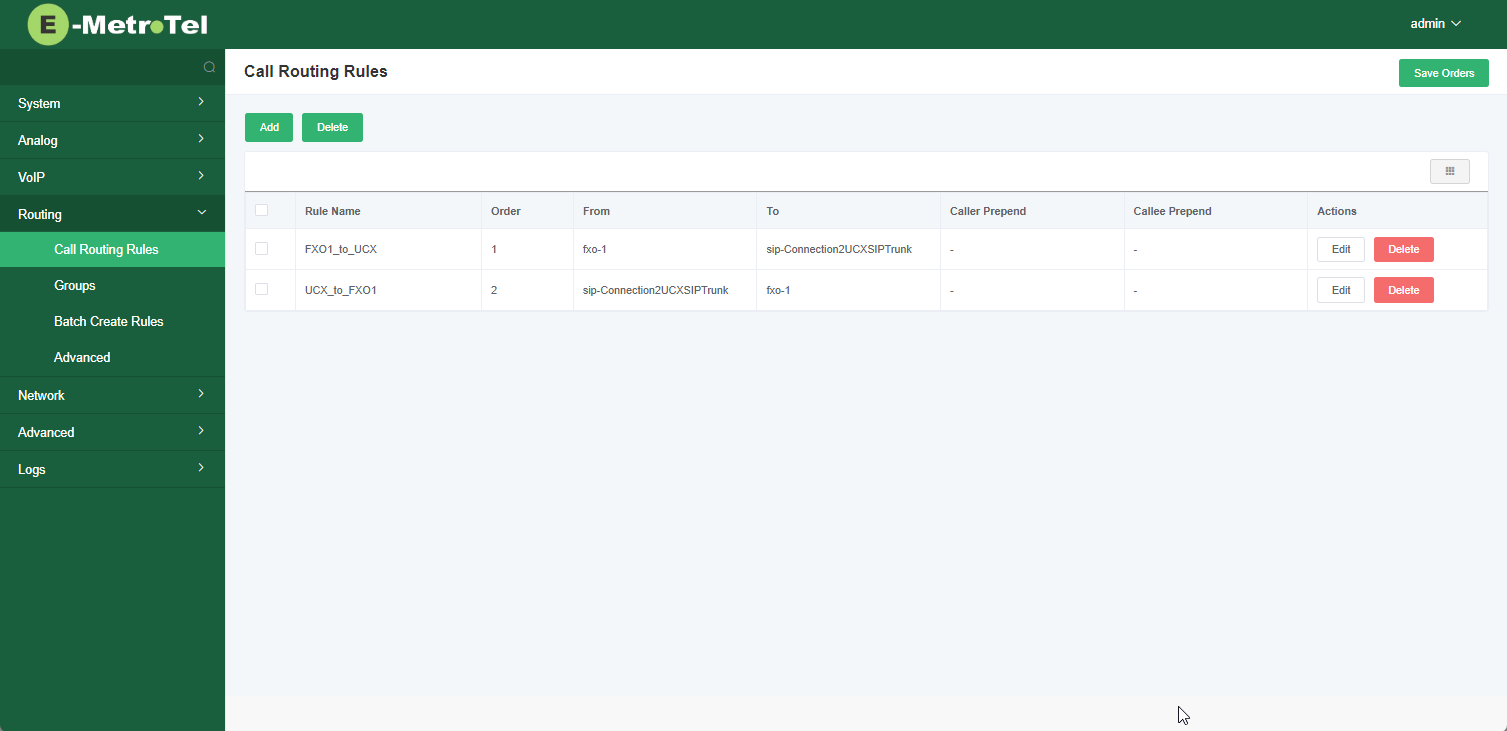Configuring Galaxy FXO8 Ports
The FXO8 card provides the interface between a physical PSTN analog line and a SIP Trunk on the UCX.
Configuring an Analog Trunk between the UCX and FXO8 card
To establish an Analog Trunk requires the UCX to be configured with a SIP trunk, an outbound route, and an inbound route. The FXO8 card requires configuring the analog port, a SIP trunk, and the Call Routing Rules that map between the physical port and the SIP trunk so that connections can be made for incoming and outgoing calls.
UCX Configuration
SIP Trunk
- Open the Web-based Configuration Tool and navigate to PBX / PBX Configuration / IP Trunk Assistant
- Click on New Account
- Select the default value of the Trunk Provider (UCx) is used for connections to the FXO8 card.
- Add a descriptive Account Name, and enter the IP Address of the target FXO8 card.
- Click Save.
- Verify that the connection to the card is established by clicking on PBX / PBX Tools and entering the command sip show peers. You should see a Status of OK in the last column of the the entry with the trunk name you just created.
Outbound Route
Add an Outbound Route to allow calls to be placed from the UCX to the FXO8 card. The only information that will pass to the PSTN from an FXO port will be the dialed digits.
Inbound Route
Add an Inbound Route that will allow calls from the PSTN to connect to the UCX after first passing through the FXO8 card. The incoming Caller ID will be available from the card.
FXO Card Configuration
Analog Channel Settings
-
Navigate to Analog / Channel Settings and click Edit on the FXO port associated with the physical port where the PSTN trunk RJ-11 connection is terminated.
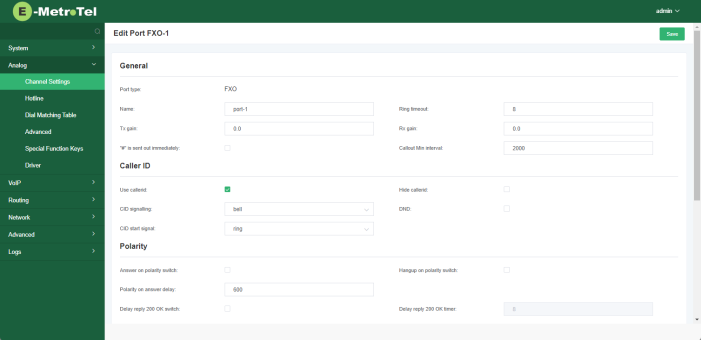
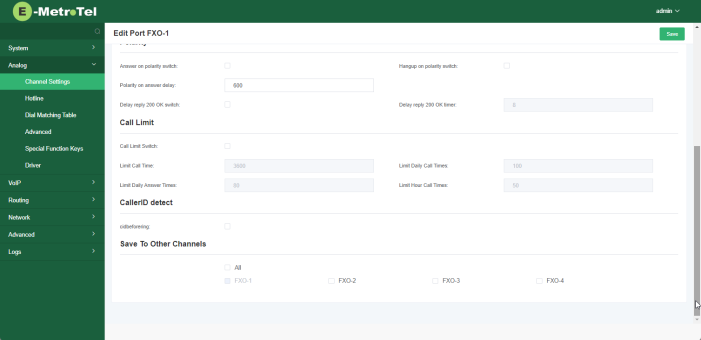
- Enter a Name to help identify how the port is configured for future reference. This same screen will be where you can adjust parameters for that particular port such as whether to wait for CallerID info to be sent, whether it requires an initial ring, and TX and RX level adjustments, among others.
- Click Save
SIP Endpoint
-
Navigate to VoIP / SIP Endpoints and click Add to create a new SIP Endpoint
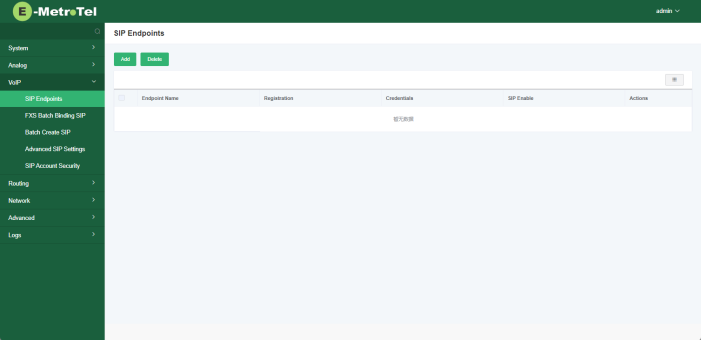
-
In the Name field on the Main Endpoint Settings page, add a descriptive name for the SIP connection to be used from the port on the card to the UCX (eg. Connection2UCXSIPTrunk), and then enter the Hostname or IP Address of the UCX.
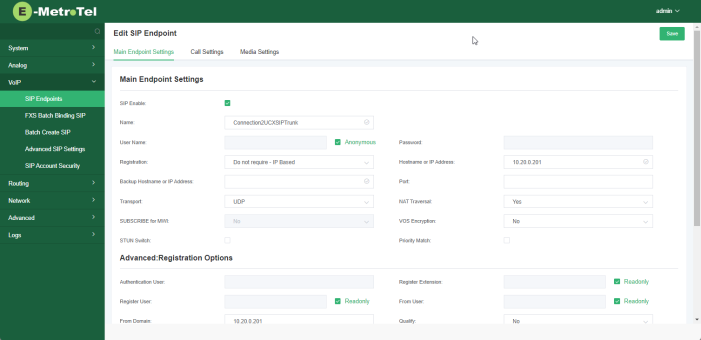
-
You may wish to scroll down the page and change the Qualify setting from No to Yes.

- Then click Save
Add the Routing Group information
-
Navigate to the Routing / Groups page and click Add
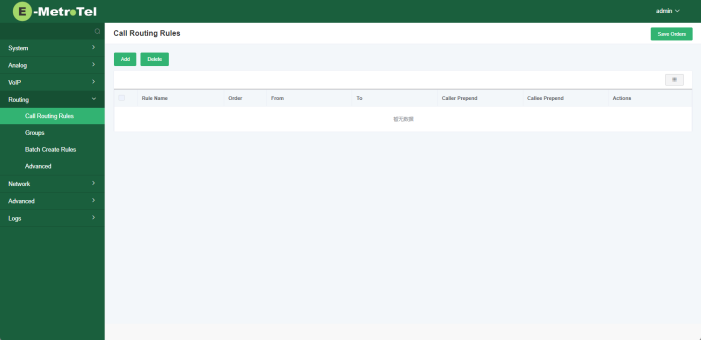
-
In the Call Routing Rules page, enter a Routing Name (eg. FXO1_to_UCX)
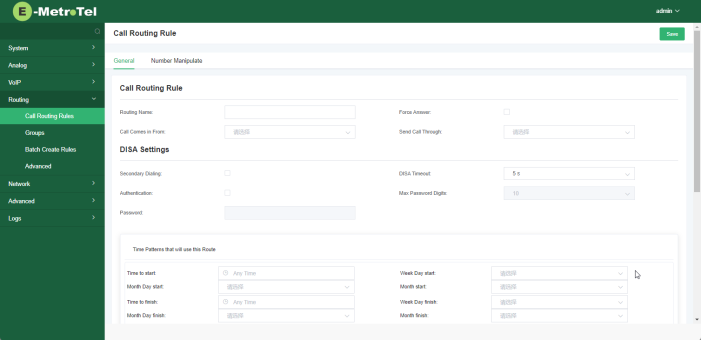
-
Click on the Call Comes in From dropdown, and select the physical RJ-11 port associated with the PSTN analog trunk (eg. fxo-1)
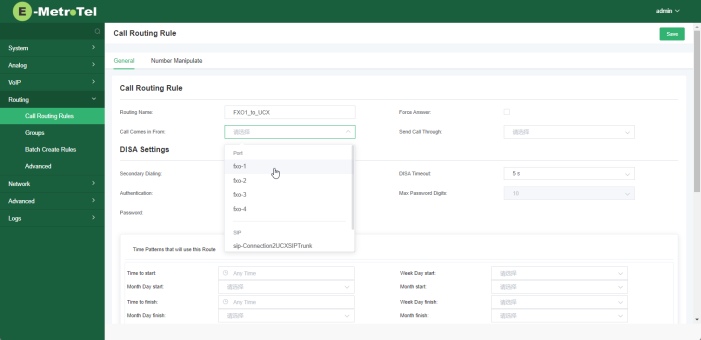
-
Click on the Send Call Through dropdown and select the name of the SIP Trunk you created for this connection to the UCX (eg. Connection2UCXSIPTrunk)
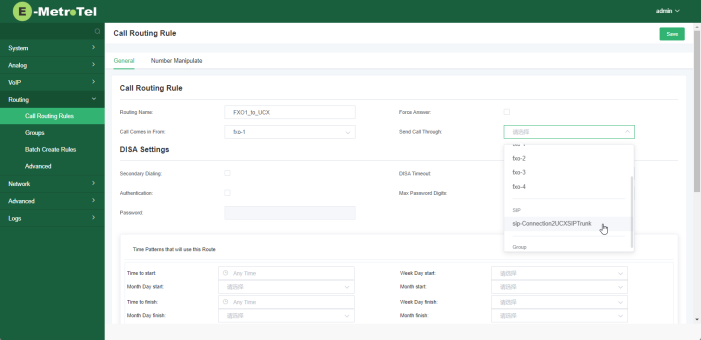
-
Click on Save and you will see the first rule you created
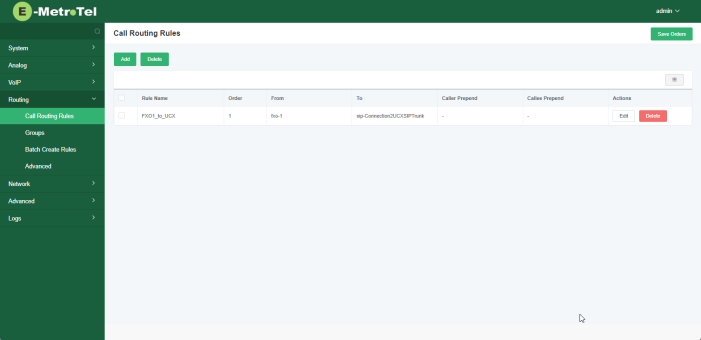
-
Click on Add to create a second rule for mapping the opposite direction of the call flow with an appropriate name (eg. UCX_to_FXO1), and reversing the order of selection of the FXO port and the SIP Trunk

-
Click Save and you will now see the two connection mappings
